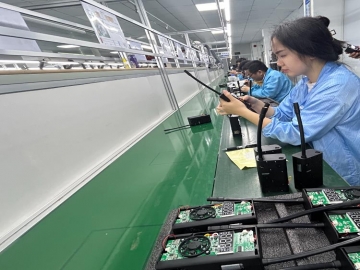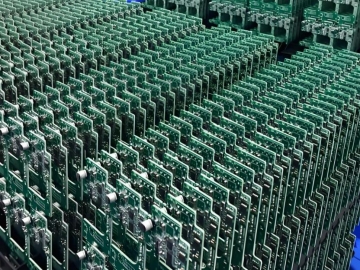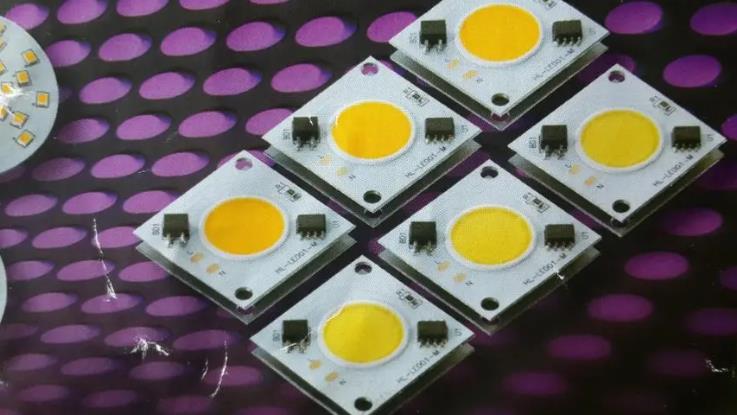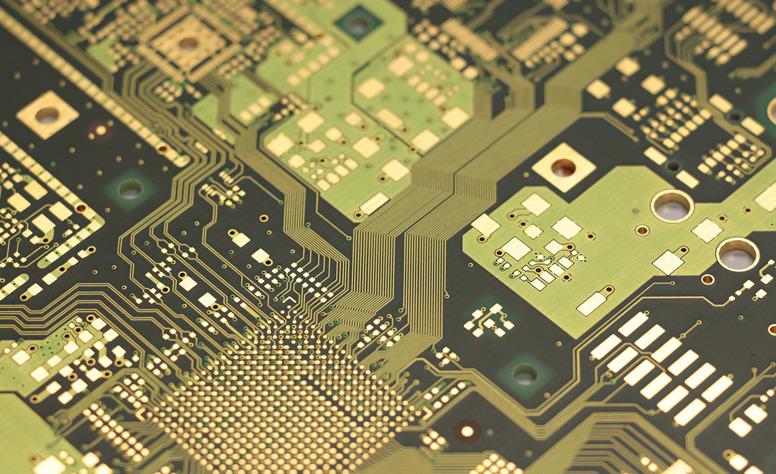An article to understand the causes and manifestations of packaging defects and failures in PCBA processing
Electronic devices are a very complex system, and the defects and failures of its packaging process are also very complex. Therefore, the study of packaging defects and failures requires a systematic understanding of the packaging process, so that the causes of defects can be analyzed from multiple perspectives.
1. Research methodology for package defects and failures
The failure mechanisms of packages can be divided into two categories: overstress and wear. Overstress failures are often transient and catastrophic; Wear failure is long-term, cumulative damage that often manifests first as performance degradation followed by device failure. The types of failed loads can be divided into mechanical, thermal, electrical, radiative, and chemical loads.
There are a variety of factors that affect package defects and failures, including material composition and properties, package design, environmental conditions, and process parameters. The basic prerequisite for identifying influencing factors and preventing package defects and failures. The influencing factors can be determined by experiments or simulations, and the physical model method and numerical parameter method are generally used. For more complex defects and failure mechanisms, the test-and-error method is often used to determine the key influencing factors, but this method requires a long test time and equipment correction, which is inefficient and costly.
In the process of analyzing the failure mechanism, it is a common method in the industry to use the fishbone diagram (causal diagram) to show the influencing factors. Fishbone diagrams can illustrate complex causes and the relationship between influencing factors and packaging defects, as well as distinguish and categorize multiple causes. In production applications, there is a type of fishbone diagram called 6Ms: which analyzes influencing factors from six dimensions: machine, method, material, measurement, manpower and natural force.
2. The type of load that caused the failure
The load types of packages can be classified as mechanical, thermal, electrical, radiative, and chemical.
Classification of failure mechanisms
Mechanical Load:These include physical shocks, vibrations, stresses exerted by filled particles on silicon chips (e.g., shrinkage stresses), and inertial forces (e.g., tremendous acceleration of spaceships). The response of the material to these loads can manifest itself in elastic deformation, plastic deformation, warpage, brittle or flexible fracture, interfacial delamination, fatigue crack generation and propagation, creep, and creep cracking.
Thermal Load:These include high temperatures during die binder curing, pre-heating prior to wire bonding, molding processes, post-curing, reprocessing of adjacent components, dip soldering, vapor phase soldering, and reflow soldering. External thermal loads cause dimensional changes in the material due to thermal expansion, as well as physical properties such as creep rates. In the case of a mismatch in the coefficient of thermal expansion (CTE mismatch), local stresses can be caused and eventually the package structure fails. Excessive thermal loads may even cause the flammable materials within the device to burn.
Electrical load:These include current fluctuations, electrostatic discharges, overelectric stress, etc., caused by sudden electrical impulses, voltage instability, or sudden oscillations (such as poor grounding) during current transmission. These external electrical loads can lead to dielectric breakdown, voltage surface breakdown, heat loss or electromigration of electrical energy. It may also increase electrolytic corrosion, dendritic crystal growth, leakage current, heat-induced degradation, etc.
Chemical Load:These include corrosion, oxidation, and ionic surface dendrites due to chemical use environments. Since moisture can penetrate through the molding compound, moisture is a major problem affecting molding devices in a humid environment. The moisture absorbed by the molding material can extract the catalyst residue in the molding material, forming by-products into the metal base, semiconductor materials and various interfaces of the die bond, inducing the degradation or even failure of the device.
For example, flux that remains on the device after assembly can migrate to the surface of the chip through the molding compound. In high-frequency circuits, subtle changes in dielectric properties (e.g., changes in dielectric constant, dissipation factor, etc.) after moisture absorption are critical. In devices such as high-voltage converters, changes in the breakdown voltage of the package are critical. In addition, some epoxy polyamides and polyurethanes can also cause degradation (sometimes referred to as "reversal") if exposed to high temperatures and humidity for long periods of time. Accelerated testing is often used to determine whether the molding compound is susceptible to this type of failure.
It should be noted that when different types of loads are applied, various failure mechanisms may interact with each other on the molded device at the same time. For example, thermal loads can cause a mismatch in the coefficient of thermal expansion between adjacent materials within the package structure, which can lead to mechanical failure. Other interactions include stress-assisted corrosion, stress corrosion cracks, field-induced metal migration, passivation and electrolyte layer cracks, package cracking due to damp heat, and temperature-induced acceleration of chemical reactions. In these cases, the combined effects of the failure mechanisms are not necessarily equal to the sum of the individual effects.
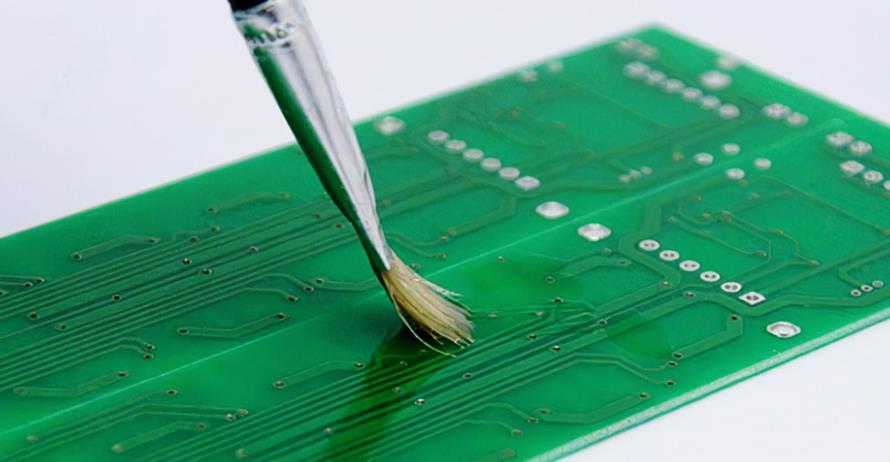
3. Classification of package defects
Package defects mainly include lead deformation, base offset, warpage, chip cracking, delamination, voiding, uneven packaging, burrs, foreign particles, and incomplete curing.
3.1 Lead Deformation
Lead deformation usually refers to the lead displacement or deformation caused by the flow of molding material, which is usually expressed by the ratio of the maximum lateral displacement x of the lead to the lead length L x/L. Bending of the leads can cause short circuits in electrical appliances (especially in high-density I/O device packages). Sometimes, the stress created by bending can cause the bond point to crack or the bond strength to decrease.
Factors that affect wire bonding include package design, lead layout, lead material and size, molding compound properties, wire bonding process, and packaging process. The lead parameters that affect the bending of a lead include the lead diameter, lead length, lead breaking load, and lead density, among others.
3.2 Base Offset
Base offset refers to the deformation and deflection of the carrier (chip base) that supports the chip.
Factors that affect base offset include the fluidity of the molding, the assembly design of the leadframe, and the material properties of the moldings and leadframes. Packages such as TSOP and TQFP are susceptible to base shift and pin deformation due to their thin lead frames.
3.3 Warpage
Warpage refers to the bending and deformation of packaged devices out of plane. Warpage due to the molding process can lead to a range of reliability issues such as delamination and chip cracking.
Warpage can also lead to a range of manufacturing problems, such as in molded ball grid array (PBGA) devices, where warpage can lead to poor coplanarity of solder balls, causing placement problems during reflow soldering of devices assembled into printed circuit boards.
There are three warping modes: concave, convex and combined. In semiconductor companies, the concave is sometimes referred to as a "smiley face" and the convex exterior is referred to as a "crying face". The main causes of warpage include CTE mismatch and curing/compression shrinkage. The latter did not receive much attention at first, and in-depth research found that the chemical shrinkage of molding compounds also plays an important role in the warping of IC devices, especially in packaging devices with different thicknesses on the top and bottom sides of the chip.
During the curing and post-curing process, the molding compound undergoes chemical shrinkage at high curing temperatures, known as "thermochemical shrinkage". By increasing the glass transition temperature and reducing the change in the coefficient of thermal expansion around Tg, the chemical shrinkage that occurs during the curing process can be reduced.
Factors that can cause warpage include factors such as molding compound composition, molding compound moisture, package geometry, etc. Package warpage can be minimized by controlling the molding material and composition, process parameters, package structure, and pre-packaging environment. In some cases, warpage can be compensated for by encapsulating the back of the electronic assembly. For example, large ceramic circuit boards or multilayer boards have external connections on the same side, and backside packaging of them can reduce warpage.
3.4 Chip cracking
The stress generated during the packaging process can cause the chip to crack. The encapsulation process often exacerbates the microcracks that form in the pre-assembly process. Wafer or die thinning, backside grinding, and die bonding are all steps that can lead to chip crack initiation.
A cracked, mechanically failed chip does not necessarily fail electrically. Whether or not a chip crack causes an instantaneous electrical failure of the device also depends on the path of the crack growth. For example, if a crack appears on the back of the chip, it may not affect any sensitive structures.
Because silicon wafers are thin and brittle, wafer-level packaging is more prone to chip cracking. Therefore, process parameters such as clamping pressure and molding conversion pressure in the transfer molding process must be strictly controlled to prevent chip breakage. Chip cracking is susceptible to the stacking process in 3D stacked packaging. Design factors that affect chip fracture in 3D packaging include die stack structure, substrate thickness, molding volume, and mold sleeve thickness.
3.5 Layering
Delamination or poor adhesion refers to the separation between the mold compound and its adjacent material interface. Layering locations can occur in any area of the molded microelectronics; It can also occur during the packaging process, post-package manufacturing, or device use.
Poor bonding interfaces due to the encapsulation process are a major contributor to delamination. Interfacial voids, surface contamination during encapsulation, and incomplete curing can all contribute to poor bonding. Other influencing factors include shrinkage stress and warpage during curing and cooling. During the cooling process, the CTE mismatch between the mold compound and adjacent materials can also lead to thermal-mechanical stress, which can lead to delamination.
3.6 Voids
In the encapsulation process, air bubbles are embedded in the epoxy material to form voids, which can occur at any stage of the encapsulation process, including transfer molding, filling, potting, and molding compounds to printing in an air environment. Voiding can be reduced by minimizing the amount of air, e.g. by emptying or vacuuming. It has been reported that the vacuum pressure used is in the range of 1~300 Torr (one atmosphere is 760 Torr).
Fill-in analysis suggests that it is the bottom melt front that is in contact with the chip, which causes the flow to be hindered. Part of the melt front flows upwards and fills the top of the half die through a large opening area around the periphery of the chip. The newly formed melt front and the adsorbed melt front enter the top area of the half-mold, resulting in blistering.
3.7 Uneven Packaging
Non-uniform body thickness can lead to warpage and delamination. Traditional packaging techniques, such as transfer molding, pressure forming, and infusion packaging techniques, are less prone to packaging defects with uneven thickness. Wafer-level packaging is particularly susceptible to uneven packaging thickness due to its process characteristics.
To ensure a uniform coating thickness, the wafer carrier should be fixed with minimal inclination for scraper mounting. In addition, blade position control is required to ensure that the blade pressure is stable, resulting in a uniform layer thickness.
Prior to hardening, when the filler particles aggregate and form an uneven distribution in the molding, it can lead to a heterogeneous or uneven material composition. Insufficient mixing of molding compounds will lead to the occurrence of heterogeneous phenomena during the encapsulation potting process.
3.8 Raw edges
Flashing refers to molding compounds that pass through parting lines and are deposited on device pins in the molding process.
Insufficient clamping pressure is the main cause of flashing. If the mold residue on the pins is not removed in time, it will lead to various problems in the assembly stage. For example, insufficient bonding or adhesion in the next encapsulation stage. Resin leakage is a sparse form of burr.
3.9 Foreign particles
In the packaging process, if the packaging material is exposed to a contaminated environment, equipment, or material, foreign particles can diffuse in the package and accumulate on the metal parts within the package (such as IC chips and wire bonding points), leading to corrosion and other subsequent reliability problems.
3.10 Incomplete curing
Insufficient curing time or low curing temperature can lead to incomplete curing. In addition, a slight shift in the mixing ratio will result in incomplete curing in the infusion of both encapsulants. In order to maximize the properties of the encapsulating material, it is necessary to ensure that the encapsulation material is fully cured. In many encapsulation methods, post-curing is allowed to ensure that the encapsulation material is fully cured. Moreover, it is necessary to pay attention to ensure the accurate ratio of the encapsulant ratio.
4. Classification of package failures
Package failures occur during the package assembly phase or during the device use phase. This is especially true when packaged microelectronics are assembled on a printed circuit board, where the device is subjected to high reflow temperatures, which can lead to delamination or rupture at the mold interface.
4.1 Stratification
As mentioned in the previous section, delamination refers to the separation of the molding material from the adjacent material at the bonding interface. External loads and stresses that can cause delamination include moisture, moisture, temperature, and all of them.
A type of stratification that often occurs during the assembly stage is called water vapor induced (or vapor induced) stratification, and its failure mechanism is mainly water vapor pressure at relatively high temperatures. When the packaged device is assembled on the printed circuit board, the solder melting temperature needs to reach 220°C or even higher, which is much higher than the glass transition temperature of the molding compound (about 110~200°C).
At the high temperature of reflux, the water vapor between the molding material and the metal interface evaporates to form water vapor, and the vapor pressure generated by the thermal mismatch between the materials, the stress caused by the hygroscopic expansion and other factors work together, which eventually leads to poor interface bonding or delamination, and even leads to the rupture of the package. Lead-free solders have higher reflow temperatures than traditional lead-based solders, making them more prone to delamination issues.
Hygroscopic Expansion Coefficient (CHE), also known as Moisture Expansion Coefficient (CME)
The failure mechanism of moisture diffusion to the package interface is an important factor in the delamination caused by moisture vapor and moisture. Moisture can diffuse through the encapsulation or along the interface between the lead frame and the molding compound. It was found that when there is a good bond between the molding compound and the leadframe interface, moisture enters the package mainly through the molding body.
However, when this bond interface is degraded due to poor packaging processes (e.g., oxidation due to bonding temperature, warping of the lead frame due to insufficient stress relief, or excessive trimming and formal stress, etc.), delamination and micro-cracks will form in the package profile, and moisture or moisture vapor will easily diffuse along this path.
To make matters worse, moisture can lead to hydration of polar epoxy binders, which weakens and reduces the chemical bonding of the interface.
Surface cleanliness is a key requirement for good bonding. Surface oxidation often leads to delamination (as in the example mentioned in the previous article), such as when a copper alloy lead frame is exposed to high temperatures. The presence of nitrogen or other forming gases helps to avoid oxidation.
Lubricants and adhesion promoters in molding compounds promote delamination. Lubricants can help separate the molding compound from the mold cavity, but increase the risk of interface delamination. Adhesion promoters, on the other hand, ensure good adhesion between the molding compound and the chip interface, but are difficult to remove from the mold cavity.
Delamination not only provides a path for water vapor diffusion, but is also a source of resin cracks. The delamination interface is where the crack originates, and when subjected to external loads, the crack will propagate through the resin. The results show that the delamination between the chip base and the resin is the most likely to cause resin cracks, and the interfacial delamination at other locations has little effect on resin cracks.
4.2 Vapor phase induced cracks (popcorn phenomenon)
Further development of water vapor-induced stratification can lead to gas-phase induced cracks. When the water vapor in the package escapes through the crack, it will produce a popping sound, which is very similar to the sound of popcorn, so it is also called the popcorn phenomenon. Cracks often extend from the base of the chip to the bottom of the plastic cover.
In soldered circuit boards, these cracks are difficult to spot during visual inspection. Large, thin forms of plastic packaging, such as QFP and TQFP, are the most prone to popcorn; In addition, it is also easy to occur in devices with a large ratio of chip base area to device area, and a large ratio of chip base area to the minimum molding material thickness. The popcorn phenomenon can be accompanied by other problems, including the breaking of the bonding ball from the bonding disc and the silicon dimples underneath the bonding ball.
Cracks in molded devices typically originate in areas of stress concentration (such as edges and flashes) on the lead frame and extend within the thinnest molded areas. Flashes are small deformations of the surface of the lead frame during the stamping process, and changing the direction of the punch so that the burr is on top of the lead frame or etching the lead frame (molding) can reduce cracks.
Reducing moisture in the molded device is key to reducing the popcorn phenomenon. High-temperature baking is often used to reduce moisture in the molded device. Previous studies have found that the permissible safe moisture content in the package is about 1100×10^-6 (0.11 wt.%). Baking at 125°C for 24 hours can fully remove the moisture absorbed inside the package.
4.3 Brittle fracture
Brittle fracture often occurs in low yield strength and inelastic materials such as silicon chips. When the material is subjected to overstress, abrupt, catastrophic crack propagation can originate from small defects such as voids, inclusions, or discontinuities.
4.4 Ductile fracture
Encapsulation materials are susceptible to two fracture modes, brittle and tough, depending on environmental and material factors, including temperature, adhesive properties of the polymeric resin, and filling load. Even in high-loading molding materials with brittle silicone fillers, ductile fracture can still occur due to the adhesive properties of the polymeric resin.
4.5 Fatigue fracture
When the molding compound is subjected to periodic stresses in the ultimate strength range, it will break due to accumulated fatigue fracture. Cyclic stresses are generated by wet, heat, mechanical, or combined loads applied to the molding material. Fatigue failure is a wear failure mechanism in which cracks typically occur at the point of interruption or at the location of the defect.
The fatigue fracture mechanism consists of three stages: crack initiation (stage I.); Stable crack propagation (Phase II.); Sudden, uncertain, catastrophic failure (Phase III.). Under periodic stress, fatigue crack propagation in stage II refers to a steady increase in crack length. The crack growth rate of molding materials is much higher than the typical value of fatigue crack growth of metal materials (about 3 times).
5. Factors that accelerate failure
Environmental and material loads and stresses, such as moisture, temperature, and contaminants, can accelerate the failure of molded devices. The molding process plays a key role in packaging failure, and characteristics such as moisture diffusion coefficient, saturated moisture content, ion diffusion rate, thermal expansion coefficient, and hygroscopic expansion coefficient of molding materials can greatly affect the failure rate. The main factors that lead to failure acceleration are moisture, temperature, contaminants and solvent-based environments, residual stresses, natural environmental stresses, manufacturing and assembly loads, and comprehensive load stress conditions.
Moisture can accelerate the delamination, cracking, and corrosion failure of molded microelectronic devices. In molded devices, moisture is an important failure acceleration factor. Mechanisms related to moisture-induced failure acceleration include bond surface degradation, hygroscopic expansion stress, water vapor pressure, ion migration, and changes in mold properties. Moisture can change properties such as glass transition temperature, Tg, modulus of elasticity, and volume resistivity of molding compounds.
Temperature is another key failure acceleration factor, and the effect of temperature on package failure is typically evaluated using temperature levels related to the glass transition temperature of the molding compound, the thermal expansion of various materials, and the resulting thermo-mechanical stress. Another influencing factor of temperature on package failure is that it can change temperature-dependent package material properties, moisture diffusion coefficient, and metal-to-metal diffusion failures.
Contaminants and Solvent-Based Environments Contaminants provide a site for failure initiation and propagation, mainly from atmospheric contaminants, moisture, flux residues, examples of uncleanliness in molding compounds, corrosive elements from thermal degradation, and by-products (typically epoxy) from die binders. Plastic encapsulates are generally not corroded, but moisture and contaminants can diffuse in the mold compound and reach the metal parts, causing corrosion of the metal parts within the molded device.
Residual Stress Die bonding can produce single stress. The magnitude of the stress level depends mainly on the characteristics of the die attach layer. Since the shrinkage of the molding compound is greater than that of other encapsulation materials, the stress generated during molding is considerable. Stress test chips can be used to determine assembly stress.
Natural Environmental Stresses In the natural environment, molding materials may degrade. Degradation is characterized by the cleavage of polymeric bonds, often by the transformation of solid polymers into viscous liquids containing monomers, dimers, and other low-molecular-weight species. Degradation is often accelerated by elevated temperatures and confined environments. Ultraviolet rays in sunlight and the atmospheric ozone layer are powerful catalysts for degradation that can lead to degradation by severing the molecular chains of epoxy resins. Isolation of molded devices from environments that can easily induce degradation and the use of polymers that are resistant to degradation are all ways to prevent degradation. Products that need to work in hot and humid environments require degradable polymers.
Manufacturing and Assembly Loads Both manufacturing and assembly conditions can cause package failure, including high and low temperatures, temperature variations, operating loads, and loads applied to the bond leads and die base due to mold flow. A typical example of this is the popcorn phenomenon that occurs when assembling molded devices.
Combined Load Stress Conditions During manufacturing, assembly, or operation, failure acceleration factors such as temperature and moisture often coexist. Combined load and stress conditions often further accelerate failure. This feature is often used in accelerated design of experiments for the purpose of screening defective parts and identifying fail-prone package devices.
Tags: PCBA /manifestations /packaging_defects /
Prev: How to correctly import MES systems into PCBA electronic processing plants?
Next: Key points of operation that need to be focused on in the DIP plug-in process


